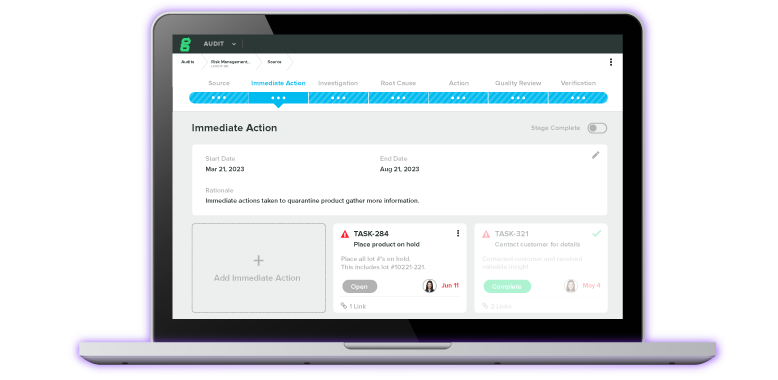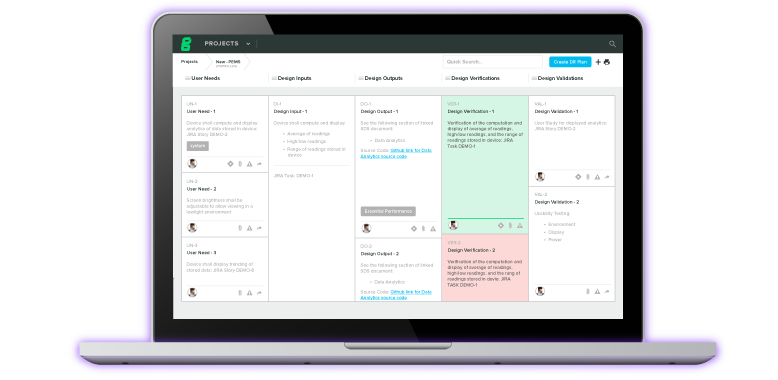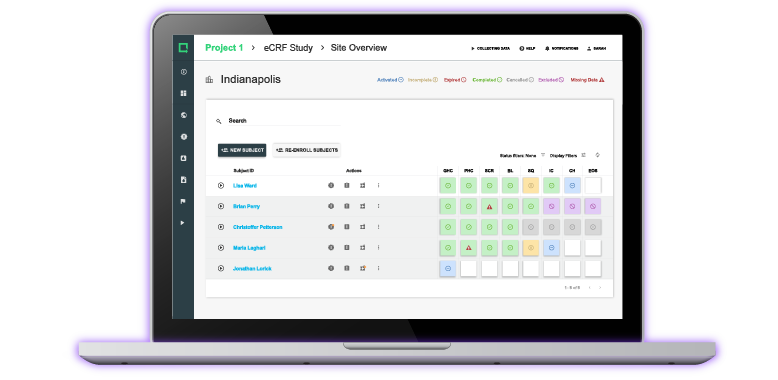How to Choose an Electronic Data Capture System to Comply with EU MDR

With the changes brought by the Medical Device Regulation (MDR), there is an increasing demand for systems that can support the collection and management of clinical data. Even though plenty of Electronic Data Capture (EDC) systems exists, it can be an operational and financial challenge for medical device manufacturers to implement these in their current state.
This post will highlight seven things that medical device manufacturers should be aware of, before choosing a system to support compliance with the MDR and its requirements on clinical data.
The 7 things to remember when choosing an EDC system
Although there are many other items to take into account when choosing an EDC system to comply with regulations set forth in the EU MDR, we are taking a look at 7 that come up the most in our conversations with medical device companies.
If you want to know what questions to probe vendors when inquiring about their EDC solution, check out this article. We highlight 10 most important questions you need answers to, in order to choose the best EDC system for your needs.
1. Many existing solutions originate from pharmaceutical clinical trials
This highly affects the licensing modules, implementation, operation, and possible applications of these systems. Pricing is one of the decisive factors because budgets for medical device manufacturers are usually lower than those in Pharma.
Look for a solution that fits your regulatory environment, clinical application, and is flexible in terms of licensing and long-term use. You'll need a solution that can be applied for smaller studies and post-market surveillance, not only a full-blown GCP clinical trial.
2. Many EDC systems require programming skills to set up and operate
This highly affects the cost of implementation, operation, and support. Make sure to look for "Do it yourself" and "Made to Measure" solutions, as these will not only simplify your setup but lower the cost as well, due to the fewer "expert" hours needed to operate the solution. In addition, your team will also be better equipped to make adjustments and review the setup if they understand how to operate it.
3. Access to live data, status reports, and data export is a must for any manufacturer that needs to comply with the MDR
Make sure that you can access data within the system without delay. Older systems tend to have migrated multiple software solutions into one, which often results in inefficient software architecture. This can lead to delays in access to data and erroneous interoperability.
Furthermore, some systems require you to wait more than 24 hours to access any live data. Modern companies need to be able to access raw data, export, and report without delay, especially if you need to review your data during an audit. You want to make sure that you can log-in and access it without any hassle.
4. Lack of adherence to modern software design principles, platform support, and availability can highly affect your data quality
People in general tend to love user-friendly solutions, whether they contain nice features or not. You can have the greatest system in the world, but if it's not user-friendly or able to live up to the modern standards for platform support and availability, you will risk lower data quality and compliance.
The key to successful implementation is to have platform support, availability and user-friendliness living up to modern standards. Nice features alone are not enough.
5. "Bring-Your-Own-Device'' will become a standard in clinical data management
One of the ways to keep the cost of data collection down is to eliminate the requirement for study-specific hardware (e.g. sponsor issued laptop, iPad), especially when involving physicians and/or patients in your data collection process.
This means that an optimal EDC system should be accessible from any modern device and be able to integrate with channels like email, SMS, and APIs to collect data. Look for solutions that support data collection across platforms and devices, without any custom implementation.
6. Look for a solution that provides more than one method of data collection
Most EDC vendors provide either eCRF (electronic Case Report Forms) or ePRO (electronic Patient Reported Outcomes) functionality, but few combine both methods of data collection in one – or have difficulty doing so. When the time comes, you want to make sure that you are not limited to a single method of data collection.
Make sure you have the ability to combine both standard eCRF and ePRO functionality, and preferably with additional methods like surveys and integrations with external data sources via APIs.
7. Full validation by the vendor is a must
If your data must comply with the MDR, you will have to use a system that is validated for clinical data collection. Make sure that the vendor you choose has the necessary quality procedures in place.
The system should be verified and validated according to the requirements specified under the ISO14155 GCP standard for medical devices, and other industry standards, such as those referring to data security. Verification and validation shall be documented and quality assured according to e.g. IEC62304, ISO13485, or similar V-model standards for software. Ask for documentation if unsure.
Greenlight Guru Clinical is a best-in-class EDC system for MedTech
To conclude, this is far from being a complete list of requirements for choosing an EDC system. However, this is a good start in making a more informed decision. Many medical device companies still use outdated methods for data collection, such as: paper, or Excel spreadsheets. These methods are more costly and risky. We go a little deeper into the pitfalls of choosing these methods in this article.
By choosing the right EDC software you will be able to evaluate and address many of the challenges we've seen our own clients experience to date.
Greenlight Guru Clinical is built specifically for the needs of medical device companies. Made to simplify clinical data collection, clinical teams can focus on the bigger goal: improving lives. Our EDC solution is pre-validated out-of-the-box per ISO 14155 and facilitates compliance with most global standards and regulations.
Whether your team needs to collect data for clinical investigations to obtain CE marking or FDA approval, or for post-market surveillance/PMCF, Greenlight Guru Clinical offers ready- to-use templates for AE/SAE reporting, concomitant medication and randomization modules.
Check out our easily customizable eCRF, our bring-your-own-device ePRO to collect subject data, and our survey and case series tool. For more information, contact us today.
Páll Jóhannesson, M.Sc. in Medical Market Access, is the founder and Managing Director of Greenlight Guru Clinical (formerly SMART-TRIAL). Páll was previously the CEO of Greenlight Guru Clinical where he led the team to create the only EDC specifically made for medical devices.
Read More Posts
Is It Possible to "Buy" a QMS?
Ultimate Guide to Clinical Data Management in MedTech
What is a Class III Medical Device in the US?
Get your free eBook PDF
How to Plan a Clinical Data Management Setup for EDC Systems
.png?width=250&height=324&name=How%20to%20Plan%20a%20Clinical%20Data%20Management%20Setup%20for%20EDC%20Systems%20-%20slide%20in%20cta%20(cover).png)










.png?width=1545&name=How%20to%20Plan%20a%20Clinical%20Data%20Management%20Setup%20for%20EDC%20Systems%20-%20slide%20in%20cta%20(cover).png)